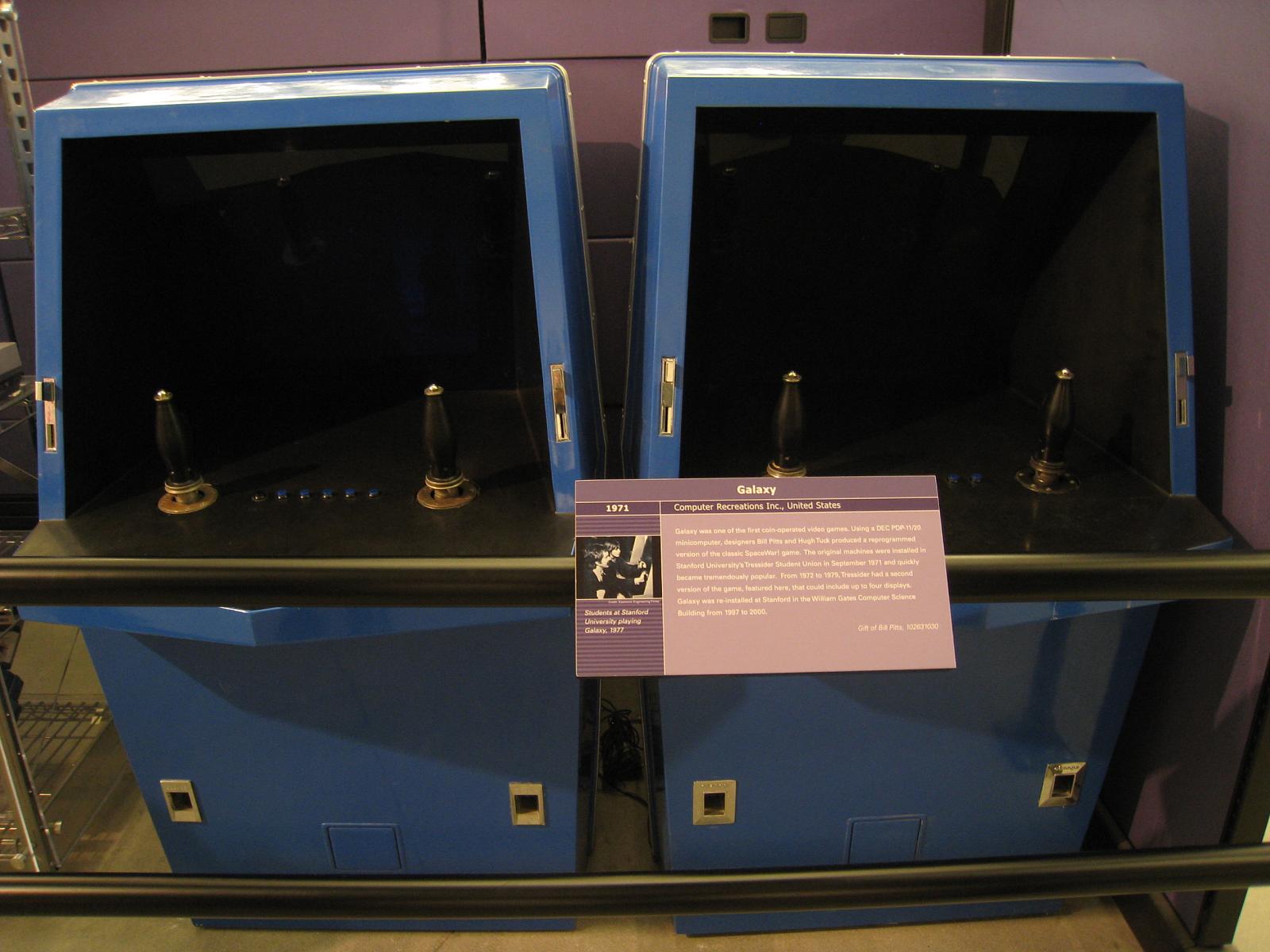-
1971
Hardware Description
Galaxy Game is a space combat arcade game developed in 1971 during the early era of video games. Created by Bill Pitts and Hugh Tuck, it was one of the first coin-operated video games; its initial prototype display in November 1971 at the Tresidder student union building at Stanford University was only a few months after a similar display of a prototype of Computer Space, making it the second known video game to charge money to play. Galaxy Game is an expanded version of the 1962 Spacewar!, potentially the first video game to spread to multiple computer installations. It features two spaceships, "the needle" and "the wedge", engaged in a dogfight while maneuvering in the gravity well of a star. Both ships are controlled by human players.
The initial prototype, which cost Pitts and Tuck US$20,000 (equivalent to about $128,000 in 2020) to build, was composed of a Digital Equipment Corporation PDP-11 minicomputer attached by a cable to a wooden console with a monitor, controls, and seats. It charged players 10 cents per game or 25 cents for three, and drew crowds "ten-deep". The pair built a second prototype, replacing the first in the student union building in June 1972. It featured the capability to play multiple games simultaneously on four monitors, though due to space restrictions only two consoles with monitors were actually installed. These consoles had a blue fiberglass casing, and the PDP-11 was housed inside one of the consoles. By the time of its installation, the pair had spent US$65,000 (equivalent to about $402,000 in 2020) on the project, but were unable to make the game commercially viable. The second prototype remained in the student union building until 1979, when the display processor became faulty. It was restored and placed in the Stanford computer science department in 1997, then moved to the Computer History Museum in 2000, where it remains as of 2017.
-
Manufacturer:
-
Hardware Type:
Video Game -
Manufacture Year:
1971 -
More Info:
-
We recognize our sponsors starting at $1 per entry.
Learn more at https://www.ithistory.org/benefits

